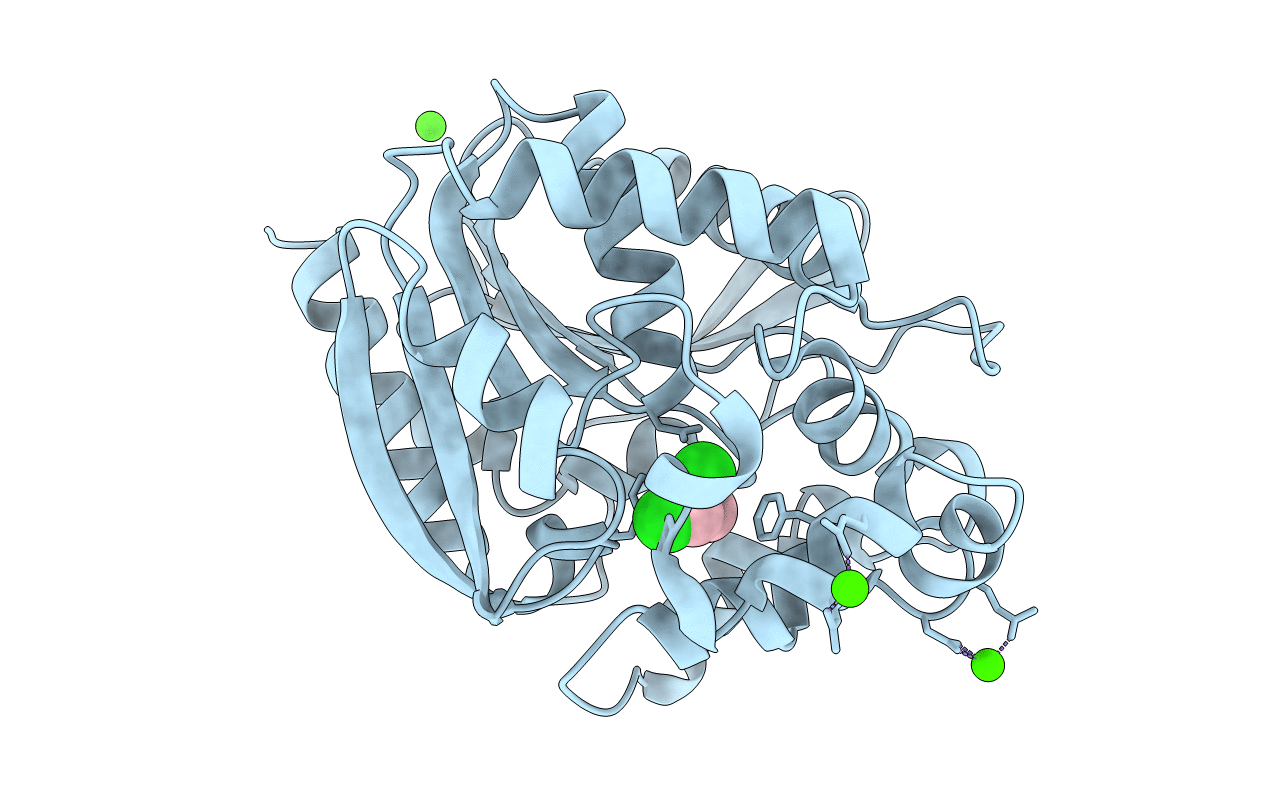
Deposition Date
2004-12-09
Release Date
2006-06-26
Last Version Date
2023-12-13
Entry Detail
PDB ID:
2BFN
Keywords:
Title:
The crystal structure of the complex of the haloalkane dehalogenase LinB with the product of dehalogenation reaction 1,2-dichloropropane.
Biological Source:
Source Organism:
SPHINGOMONAS PAUCIMOBILIS (Taxon ID: 13689)
Method Details:
Experimental Method:
Resolution:
1.60 Å
R-Value Free:
0.17
R-Value Work:
0.14
R-Value Observed:
0.15
Space Group:
P 21 21 21


